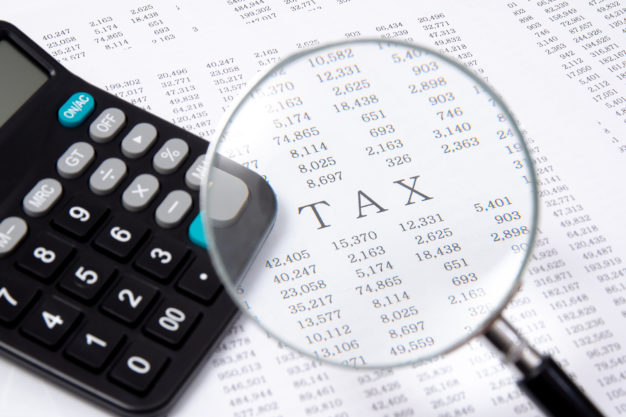IRS Urges Taxpayers to Choose Tax Preparers Carefully to Protect Data (IR-2025-21)
The IRS reminded taxpayers to choose the right tax professional to help them avoid tax-related identity theft and financial harm. […]
Read MoreA savings account with the tax benefits of a health savings account or an educations savings account but without the singular restricted focus could be something that gains traction as Congress addresses the tax provision of the Tax Cuts and Jobs Act that expire in 2025.
The concept was promoted by multiple witnesses testifying during a recent Senate Finance Committee hearing on the subject of child savings accounts and other tax advantaged accounts that would benefit children. It also is the subject of a recently released report from The Tax Foundation.
Rather than push new limited-use savings accounts, “policymakers may want to consider enacting a more comprehensive savings program such as a universalsavingsaccount,” Veronique de Rugy, a research fellow at George Mason University, testified before the committee during the May 21, 2024, hearing. “Universalsavingsaccounts will allow workers to save in one simple account from which they would withdraw without penalty for any expected or unexpected events throughout their lifetime.”
She noted that, like other more focused savings accounts, like health savings accounts, it would have “the benefit of sheltering some income from the punishing double taxation that our code imposes.”
De Rugy added that universal savings accounts “have a benefit that they do not discourage savings for those who are concerned that the conditions for withdrawals would stop them from addressing an emergency in their family.”
Adam Michel, director of tax policy studies at the Cato Institute, who also promoted the idea of universal savings accounts. He said these accounts “would allow families to save for their kids or any of life’s other priorities. The flexibility of these accounts make them best suited for lower and middle income Americans.”
He also noted that they are promoting savings in countries that have implemented them, including Canada and United Kingdom.
“For example, almost 60 percent of Canadians own tax-free savingsaccounts,” Michel said. “And more than half of those account holders earned the equivalent of about $37,000 a year. These accounts have helped increase savings and support the rest of the Canadian savings ecosystem.”
De Rugy noted that in countries that have implemented it, they function like a Roth account in that money that has already been taxed can be put into it and not penalized or taxed upon withdrawal.
Michel also noted that the if the tax benefits extend to corporations as they do with deposits to employee health savings accounts, “to the extent that you lower the corporate income tax, you’re going to encourage a different additional investment into savings by those entities.”
The Tax Foundation in its report simulated how a universal savings account could work, based on how they are implemented in Canada. The simulation assumed the accounts could go active in 2025 for adults aged 18 years or older.
On a post-tax basis, individuals would be allowed to contribute up to $9,100 on a post-tax basis annually, with that cap indexed for inflation. Any unused “contribution room” would be allowed to be carried forward. Earnings would be allowed to grow tax-free and withdrawals would be allowed for any purpose without penalty or further taxation. Any withdrawal would be added back to that year’s contribution room and that would be eligible for carryover as well.
“The fiscal cost of this USA policy would be offset by ending the tax advantage of contributions to HSAs beginning in 2025,” the report states. “As such, future contributions to HSAs would be given normal tax treatment, i.e. included in taxable income and subject to payroll tax with subsequent returns on contributions also included in taxable income.”
In this scenario, the Tax Foundation report estimates that “this policy change would on net raise tax revenue by about $110 billion over the 10-year budget window.”
As for the impact on taxpayers, the “after-tax income would fall by about 0.1 percent in 2025 and by a smaller amount in 2034, reflecting the net tax increase in those years,” the report states. “Over the long run, and accounting for economic impacts, taxpayers across every quintile would see a small increase in after-tax income on average, but the top 5 percent of earners would continue to see a small decrease in after-tax income on average.”
By Gregory Twachtman, Washington News Editor
The IRS reminded taxpayers to choose the right tax professional to help them avoid tax-related identity theft and financial harm. […]
Read More
The IRS provided six tips to help taxpayers file their 2024 tax returns more easily. Taxpayers should follow these steps […]
Read More
The IRS encouraged taxpayers to make essential preparations and be aware of significant changes that may affect their 2024 tax […]
Read More
Guidance is provided for property and casualty insurers that write inland marine insurance and pay the State Fire Marshal Regulatory […]
Read More
The IRS released the optional standard mileage rates for 2025. Most taxpayers may use these rates to compute deductible costs […]
Read More
The IRS, in partnership with the Coalition Against Scam and Scheme Threats (CASST), has unveiled new initiatives for the 2025 […]
Read More
The IRS reminded disaster-area taxpayers that they have until February 3, 2025, to file their 2023 returns, in the entire […]
Read More
The IRS has announced plans to issue automatic payments to eligible individuals who failed to claim the Recovery Rebate Credit on their […]
Read More